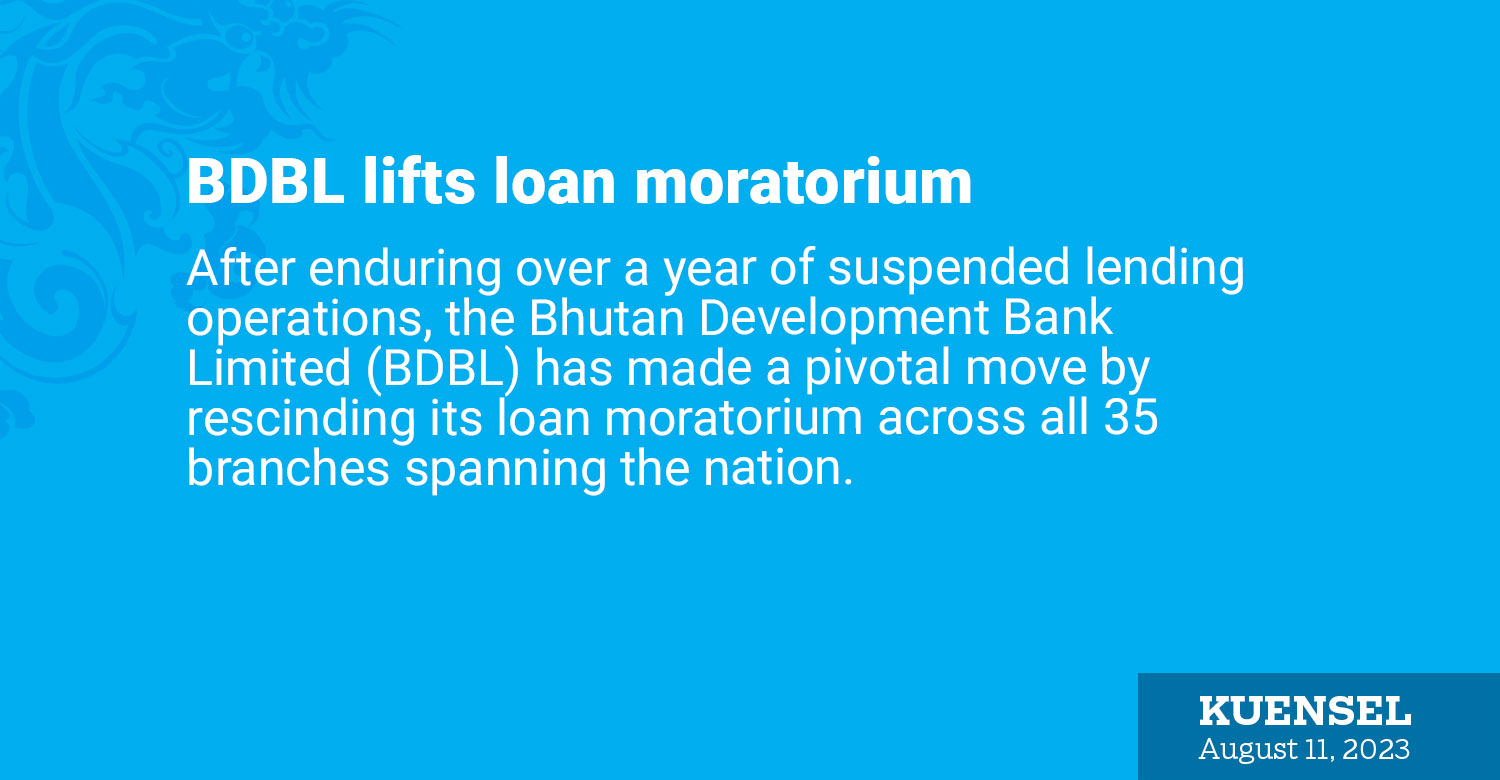Dechen Dolkar
After enduring over a year of suspended lending operations, the Bhutan Development Bank Limited (BDBL) has made a pivotal move by rescinding its loan moratorium across all 35 branches spanning the nation.
This decision to impose a freeze on all fresh lending activities by BDBL was prompted by mounting concerns over the escalation of Non-Performing Loans (NPL), a challenge that emerged in May last year.
However, as the financial tides shift, a new chapter begins with the recent step taken by the bank.
In the vanguard of this transformative shift was the first partial lifting of the loan suspension in March this year, a strategic manoeuver that revitalised critical sectors across 11 branches.
Tshering Om, chief executive officer of BDBL, elucidated the rationale behind this momentous decision, citing the keen consideration of the Royal Monetary Authority (RMA) and the Bank’s profound role within the agricultural domain and its intrinsic ties to the rural fabric.
This calculated move, she said, was informed by a broader commitment to the well-being of the local populace.
The green light for this strategic manoeuver was predicated upon the diligent implementation of a fortified and judicious protocol for loan endorsement and eligibility evaluation, an initiative that is conscientiously aimed at managing the specter of NPLs.
Tshering Om emphasised, “These measured safeguards have been meticulously instituted to prudently navigate the terrain of Non-Performing Loans.”
A comprehensive framework has been woven, marked by both antecedent and consequent checks, to stymie the surge of NPLs and bolster the bank’s fiscal resilience. Treading the path of prudence, the bank remains steadfast in its commitment to a circumspect approach towards loan-sanctioning.
Furthermore, Tshering Om underscored the establishment of a stringent oversight mechanism, ensuring that the allocated funds are channeled with unwavering fidelity to their designated purposes, a move reflective of an unequivocal commitment to financial integrity.
The RMA has mandated a stringent NPL ceiling of 5 percent to be adhered to by the end of December 2023. With June 2023 marking a significant milestone, Tshering Om revealed that the bank has effectively met the RMA’s NPL threshold of 7.5 percent post charge-offs.
Assuaging concerns surrounding NPLs, Tshering Om said that the current state of affairs is aptly managed and well-contained.
It is noteworthy that the NPL ratio stood at 9.2 percent as of September 30, last year.
The bank, in steadfast pursuit of its fiscal obligations, is tasked with further reducing the NPL threshold to 7.5 percent by the culmination of 2022, followed by an even more stringent 5 percent by the close of 2023.
Notably, new loans are mandated to adhere to an even lower NPL ratio of 3 percent.
This decisive action by BDBL is framed against the backdrop of a directive issued by the RMA, impacting not only BDBL but also the Royal Insurance Corporation of Bhutan Limited and the National Cottage and Small Industry (CSI) Development Bank.
This directive instigated a temporary halt to loan disbursements, a contingency measure enacted in light of the presence of NPLs—loans characterised by overdue payments spanning a period of 90 days or beyond.


